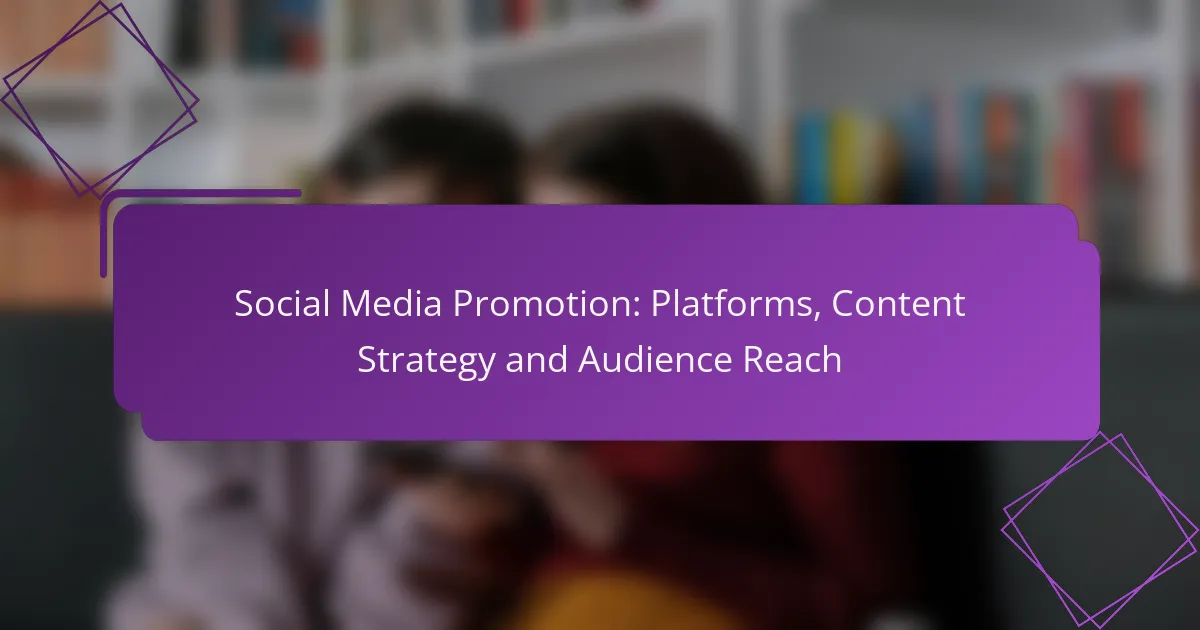In today’s digital landscape, social media promotion is essential for e-commerce success, with platforms like Facebook, Instagram, and LinkedIn offering distinct advantages tailored to different audiences. A well-crafted content strategy that resonates with your target demographic, combined with engaging formats, can significantly boost your brand’s visibility and foster community interaction. By prioritizing timely engagement and interactive content, businesses can build lasting relationships and enhance user participation.
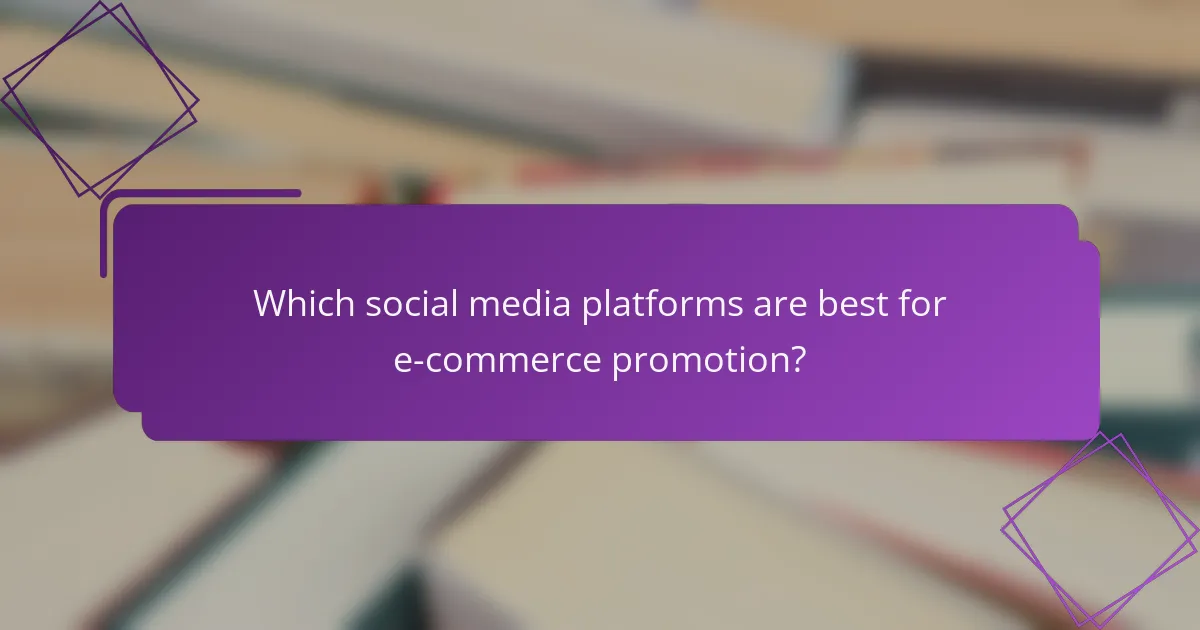
Which social media platforms are best for e-commerce promotion?
For e-commerce promotion, platforms like Facebook, Instagram, Pinterest, LinkedIn, and Twitter each offer unique advantages. Choosing the right platform depends on your target audience, product type, and marketing goals.
Facebook for targeted advertising
Facebook is a powerful tool for targeted advertising, allowing businesses to reach specific demographics based on interests, behaviors, and location. With over 2 billion active users, it provides extensive options for ad formats, including carousel ads and dynamic product ads.
To maximize effectiveness, utilize Facebook’s Audience Insights to refine your target audience. Regularly test different ad creatives and formats to determine what resonates best with your audience.
Instagram for visual storytelling
Instagram excels in visual storytelling, making it ideal for brands with visually appealing products. The platform’s emphasis on high-quality images and videos allows businesses to showcase their products in a lifestyle context, enhancing engagement.
Utilize features like Instagram Stories and Shopping to create interactive experiences. Collaborating with influencers can also amplify your reach and credibility within your niche.
Pinterest for product discovery
Pinterest serves as a discovery platform where users actively seek inspiration for purchases. With its visual format, it’s particularly effective for fashion, home decor, and DIY products, driving traffic to e-commerce sites.
To leverage Pinterest, create visually compelling pins and optimize them with relevant keywords. Regularly update boards and engage with trending topics to increase visibility and user interaction.
LinkedIn for B2B engagement
LinkedIn is the go-to platform for B2B engagement, making it suitable for e-commerce businesses targeting professionals or companies. It allows for networking, sharing industry insights, and promoting products to a business-oriented audience.
Utilize LinkedIn Ads to reach decision-makers and showcase case studies or whitepapers that highlight your products’ value. Regularly post updates and engage in relevant groups to build authority and connections.
Twitter for real-time interaction
Twitter is ideal for real-time interaction and customer engagement, allowing brands to respond quickly to inquiries and participate in trending conversations. Its fast-paced nature makes it suitable for promotions, announcements, and customer service.
Utilize Twitter polls and threads to engage your audience and gather feedback. Monitor relevant hashtags to join conversations and increase brand visibility, but avoid spamming users with excessive promotional content.
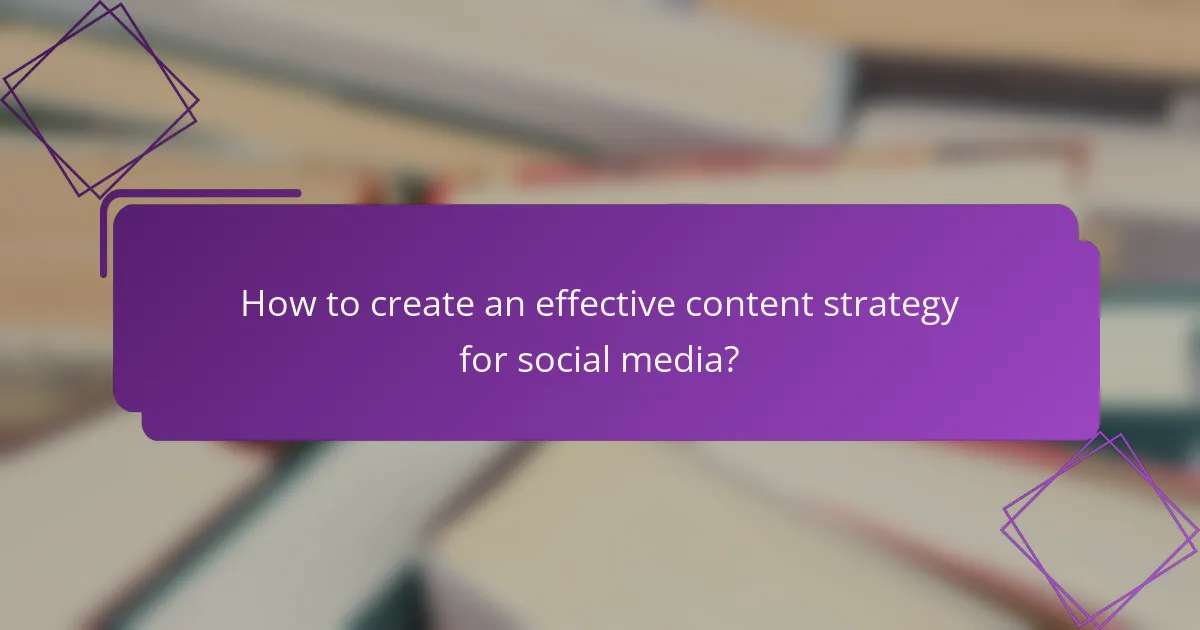
How to create an effective content strategy for social media?
An effective content strategy for social media involves understanding your audience, planning your content, and utilizing various formats to engage users. By focusing on these elements, you can enhance your brand’s visibility and foster community interaction.
Define target audience personas
Defining target audience personas is crucial for tailoring your content strategy. Start by researching demographics, interests, and behaviors of your ideal customers to create detailed profiles. These personas help you understand what type of content resonates with different segments of your audience.
Consider factors like age, location, and online habits. For example, a brand targeting young adults may focus on platforms like Instagram and TikTok, while a business aimed at professionals might prioritize LinkedIn. Use surveys and analytics tools to gather insights that inform your personas.
Utilize a content calendar
A content calendar is an essential tool for organizing and scheduling your social media posts. It allows you to plan content in advance, ensuring a consistent posting schedule and alignment with marketing campaigns or seasonal events. Aim to create a calendar that covers at least a month ahead.
Include key details such as post dates, platforms, content types, and any relevant hashtags. This helps streamline your workflow and allows for better collaboration among team members. Regularly review and adjust the calendar based on performance metrics to optimize engagement.
Incorporate user-generated content
User-generated content (UGC) can significantly enhance your social media strategy by fostering authenticity and community engagement. Encourage your audience to share their experiences with your brand through photos, reviews, or testimonials. This not only builds trust but also provides you with valuable content to share.
Consider hosting contests or campaigns that incentivize users to create and share content related to your brand. Always give credit to the original creators when reposting their content, and ensure that you have permission to use their submissions.
Leverage video marketing
Video marketing is a powerful way to engage audiences on social media, as it tends to capture attention more effectively than static images or text. Create short, compelling videos that convey your brand message, showcase products, or share customer stories. Aim for videos that are under two minutes to maintain viewer interest.
Utilize live streaming and stories on platforms like Instagram and Facebook to connect with your audience in real-time. Experiment with different formats, such as tutorials, behind-the-scenes looks, or Q&A sessions, to see what resonates best with your audience.

What are the best practices for audience engagement on social media?
Effective audience engagement on social media involves timely interactions, interactive content, and fostering community. These practices help build relationships, enhance visibility, and encourage user participation.
Respond promptly to comments
Timely responses to comments can significantly boost audience engagement. Aim to reply within a few hours, as this shows that you value your audience’s input and fosters a sense of community.
Consider setting aside dedicated time each day to monitor and respond to comments. Use tools like social media management platforms to streamline this process and ensure no comment goes unnoticed.
Host live Q&A sessions
Live Q&A sessions create an opportunity for real-time interaction with your audience. These sessions can be scheduled weekly or monthly, allowing followers to ask questions and receive immediate answers, which enhances trust and connection.
Promote these sessions in advance across your social media channels to maximize participation. Use engaging formats, such as video or live streaming, to make the experience more dynamic and appealing.
Run interactive polls and quizzes
Interactive polls and quizzes are effective tools for engaging your audience and gathering insights. They encourage participation and can be easily shared, increasing your reach and visibility.
Utilize the built-in polling features on platforms like Instagram and Twitter, or create quizzes using tools like Typeform. Keep questions relevant and fun to maintain interest and encourage sharing among followers.
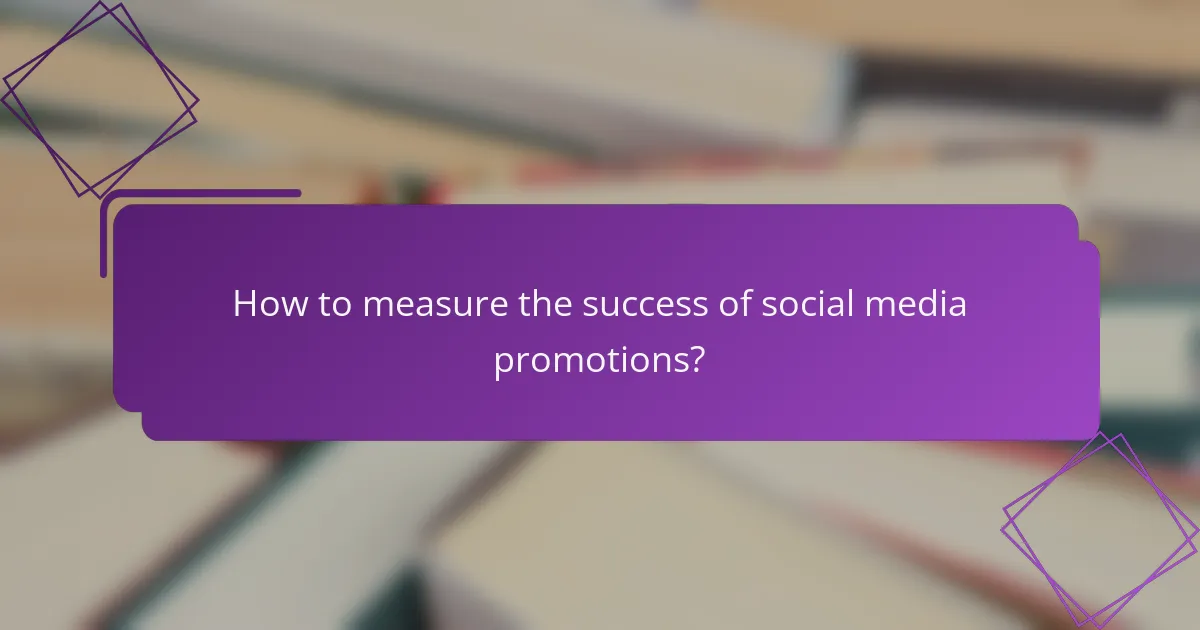
How to measure the success of social media promotions?
Measuring the success of social media promotions involves analyzing various metrics that reflect audience engagement and conversion. Key indicators include engagement rates, conversion rates, and the effectiveness of different content strategies.
Track engagement metrics
Engagement metrics are crucial for understanding how well your content resonates with your audience. Key metrics to track include likes, shares, comments, and overall reach. A good engagement rate typically falls between 1% to 5%, depending on the platform and industry.
To effectively track these metrics, consider using platform-specific insights or third-party tools. Regularly reviewing these metrics helps identify which types of content generate the most interaction, allowing for better-targeted future promotions.
Analyze conversion rates
Conversion rates measure the percentage of users who take a desired action after engaging with your social media content. This could include signing up for a newsletter, making a purchase, or downloading an app. A healthy conversion rate usually ranges from 2% to 5%, but this can vary widely based on your industry and target audience.
To improve conversion rates, ensure your calls-to-action (CTAs) are clear and compelling. A/B testing different CTAs can provide insights into what works best for your audience, helping to refine your promotional strategies.
Use social media analytics tools
Utilizing social media analytics tools can streamline the process of measuring success. Tools like Google Analytics, Hootsuite, or Sprout Social provide comprehensive data on engagement, reach, and conversions. These platforms often offer customizable dashboards to track specific metrics relevant to your goals.
When selecting a tool, consider factors such as ease of use, integration capabilities, and the specific metrics you need to track. Regularly reviewing analytics reports can help you adjust your strategies in real-time, ensuring your promotions remain effective and aligned with your objectives.
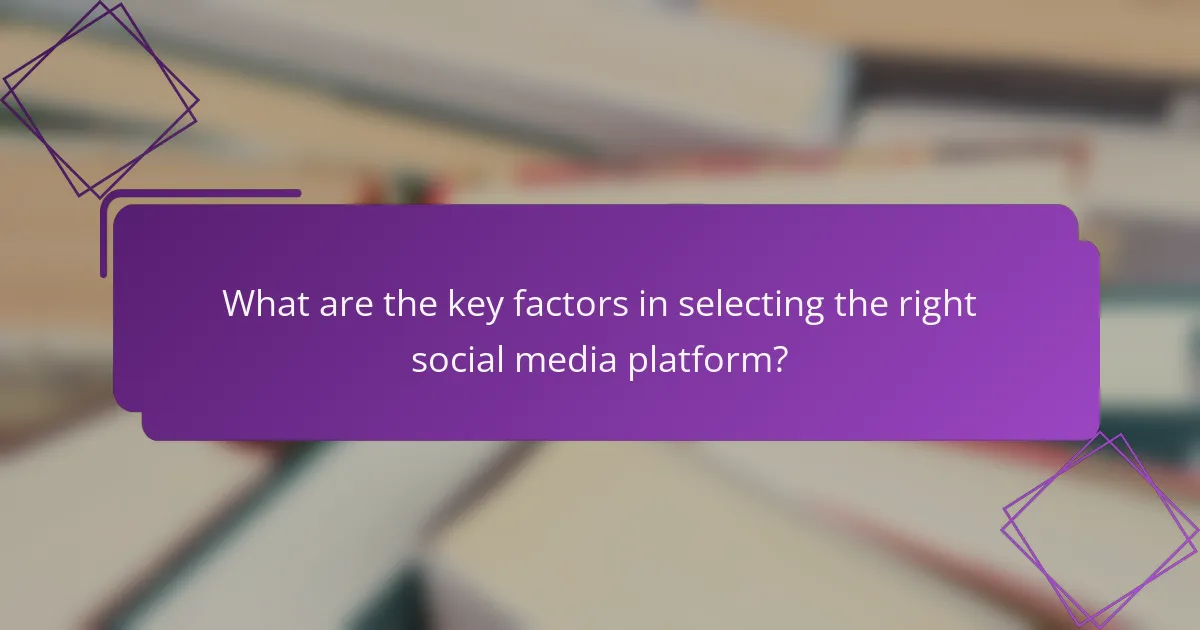
What are the key factors in selecting the right social media platform?
Choosing the right social media platform involves understanding your target audience, the type of content you plan to share, and the unique features of each platform. Key factors include demographic alignment, engagement potential, and the platform’s capabilities for content types like images, videos, or articles.
Audience Demographics
Different social media platforms attract varying demographics. For instance, Instagram and TikTok are popular among younger audiences, while Facebook tends to have a broader age range. Understanding the age, interests, and behaviors of your target audience can help you select the platform that best reaches them.
Content Type
The type of content you intend to create is crucial in platform selection. Visual content thrives on Instagram and Pinterest, while Twitter is better for text-based updates and conversations. Consider what formats resonate with your audience and align with your marketing goals.
Engagement Levels
Engagement rates can differ significantly across platforms. For example, LinkedIn often sees higher engagement for B2B content, while platforms like TikTok may yield rapid interactions for entertaining videos. Analyze engagement metrics to determine where your content will be most effective.
Advertising Options
Each platform offers distinct advertising capabilities that can influence your choice. Facebook provides advanced targeting options, while Instagram focuses on visually appealing ads. Evaluate the advertising tools available and how they can support your overall marketing strategy.
Platform Features
Consider the unique features of each platform, such as Stories on Instagram, live streaming on Facebook, or professional networking on LinkedIn. These features can enhance your content strategy and audience interaction, making it essential to align them with your objectives.
Trends and Popularity
Stay informed about current trends and the popularity of platforms. New platforms can emerge quickly, while established ones may decline in user engagement. Regularly assess the landscape to ensure your strategy remains relevant and effective.
